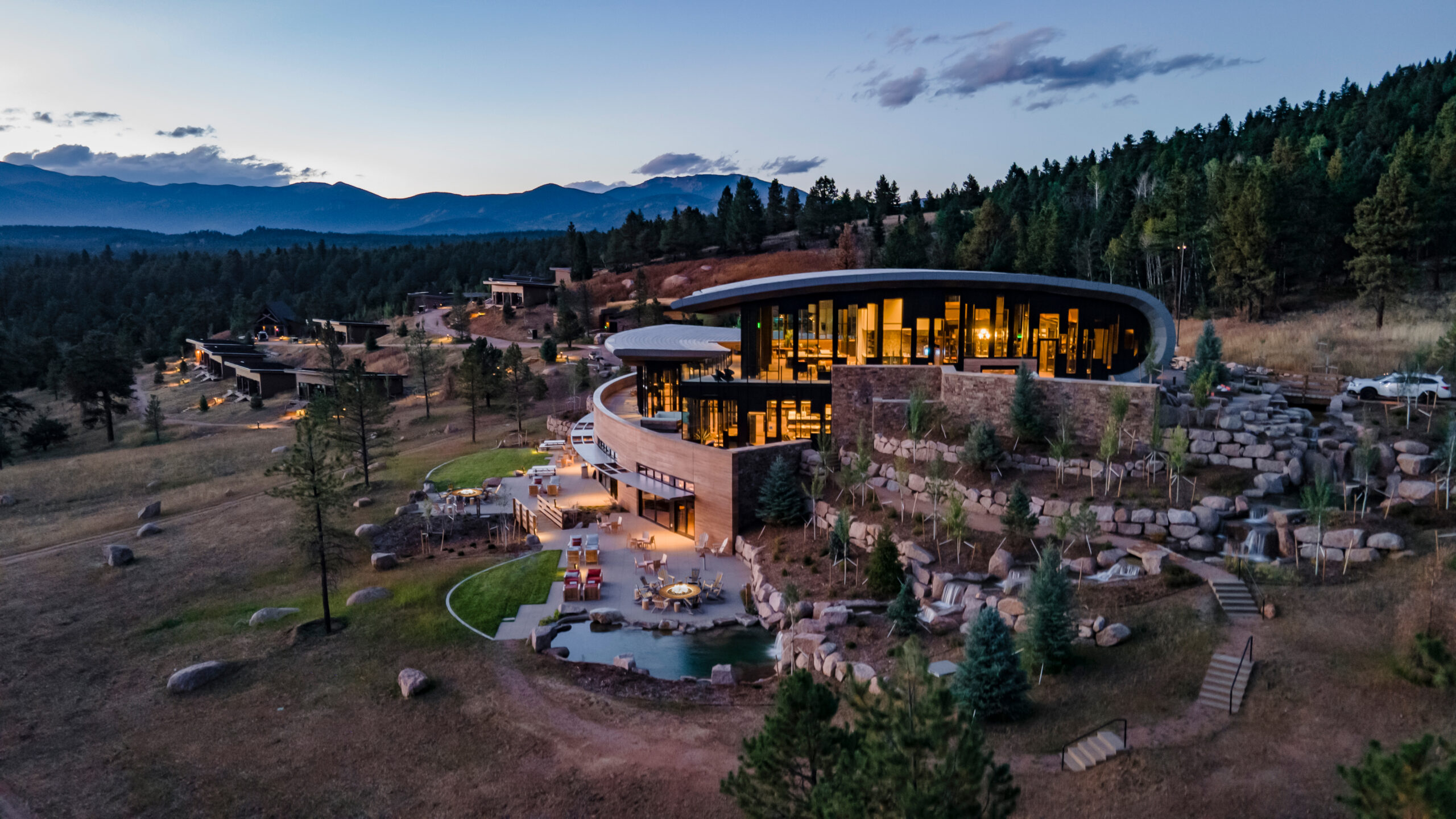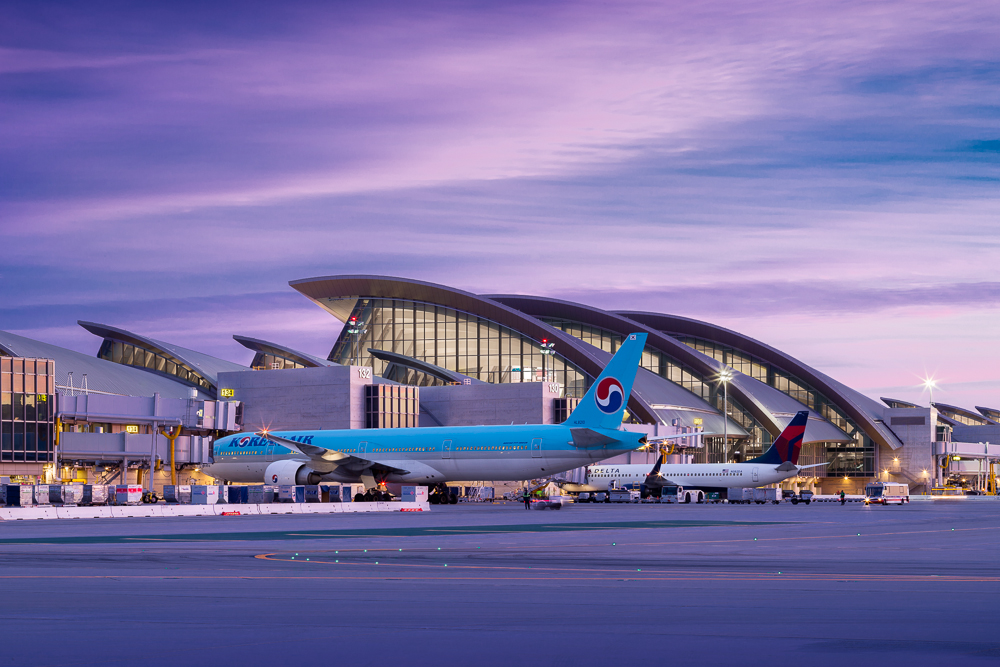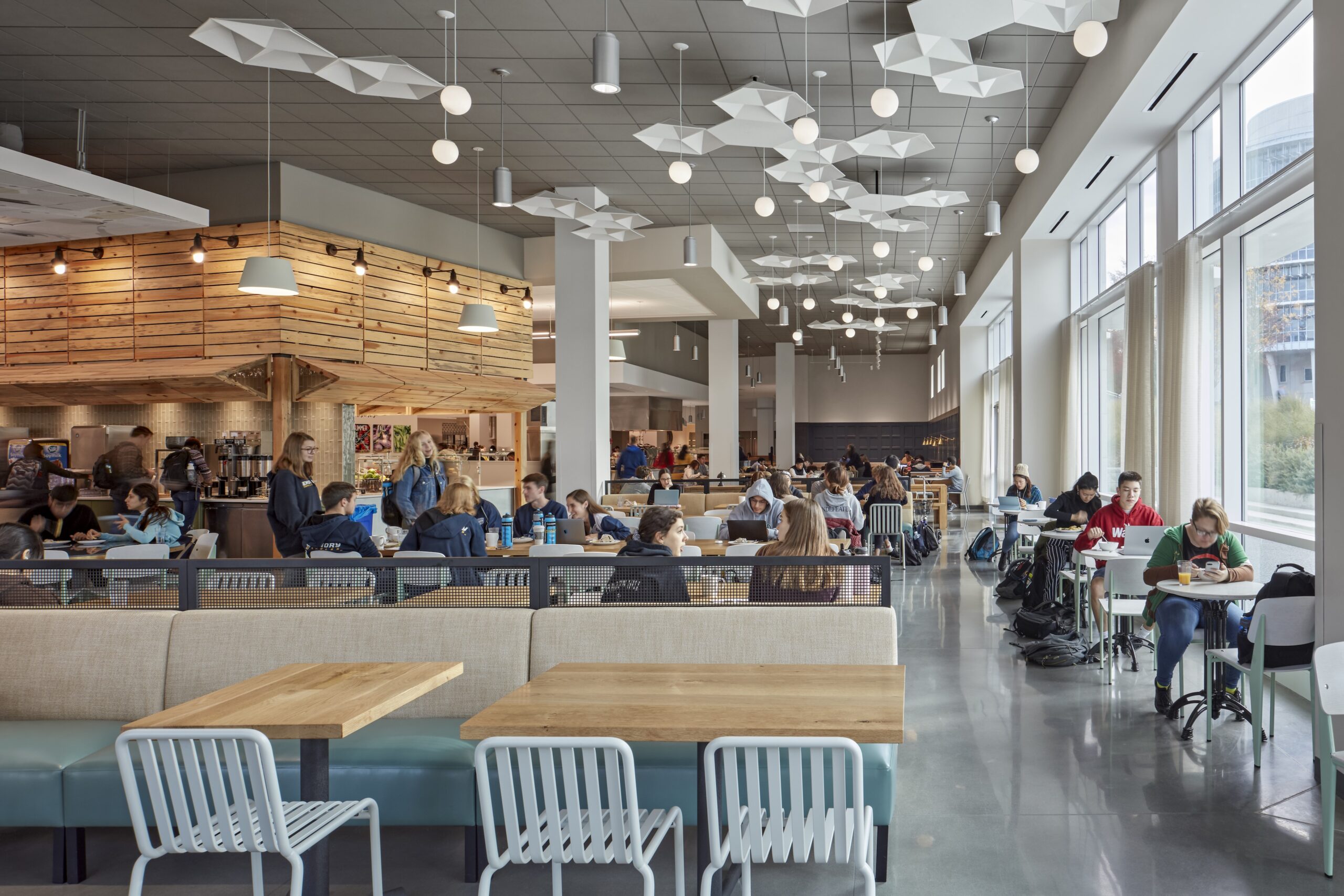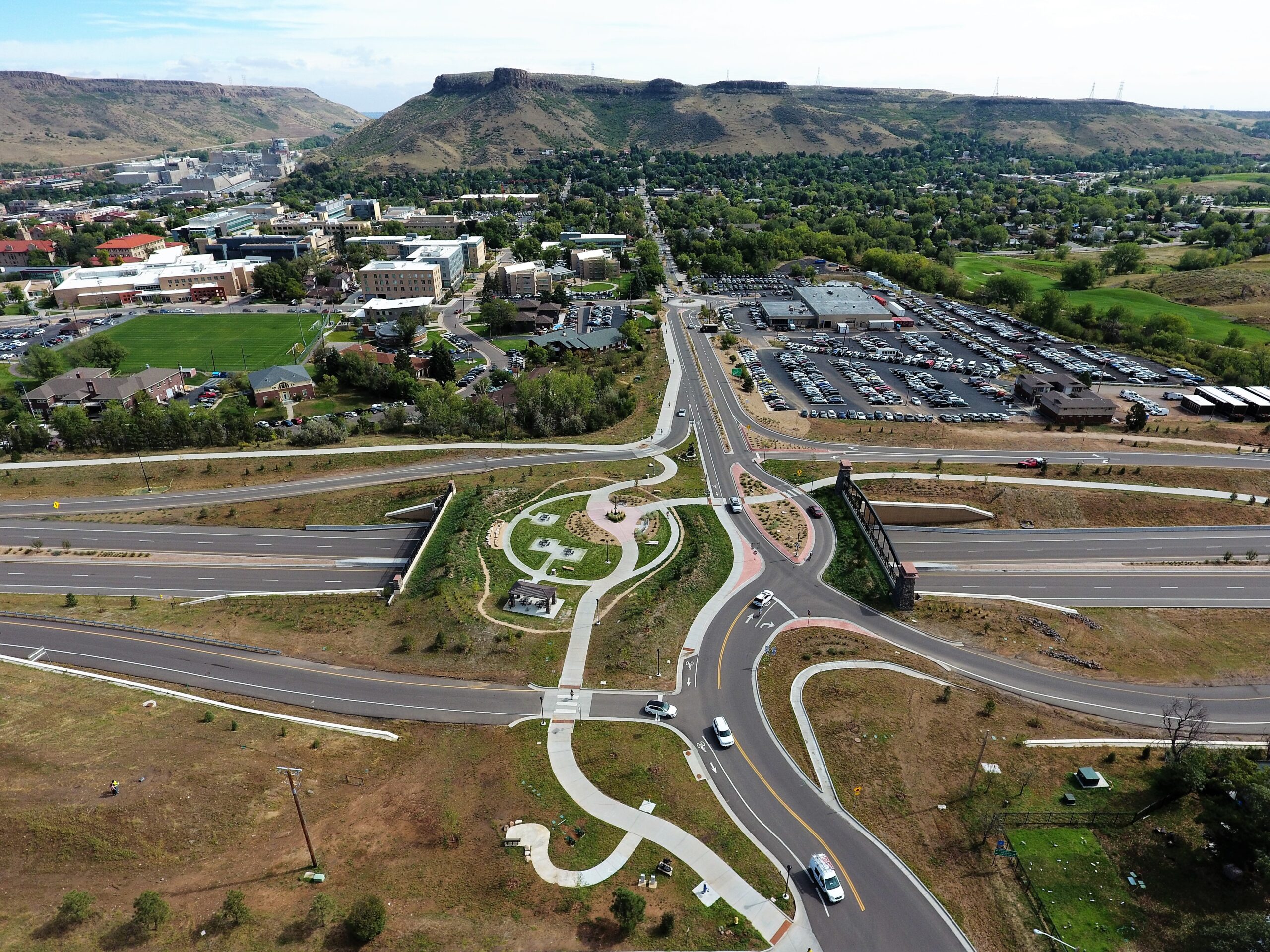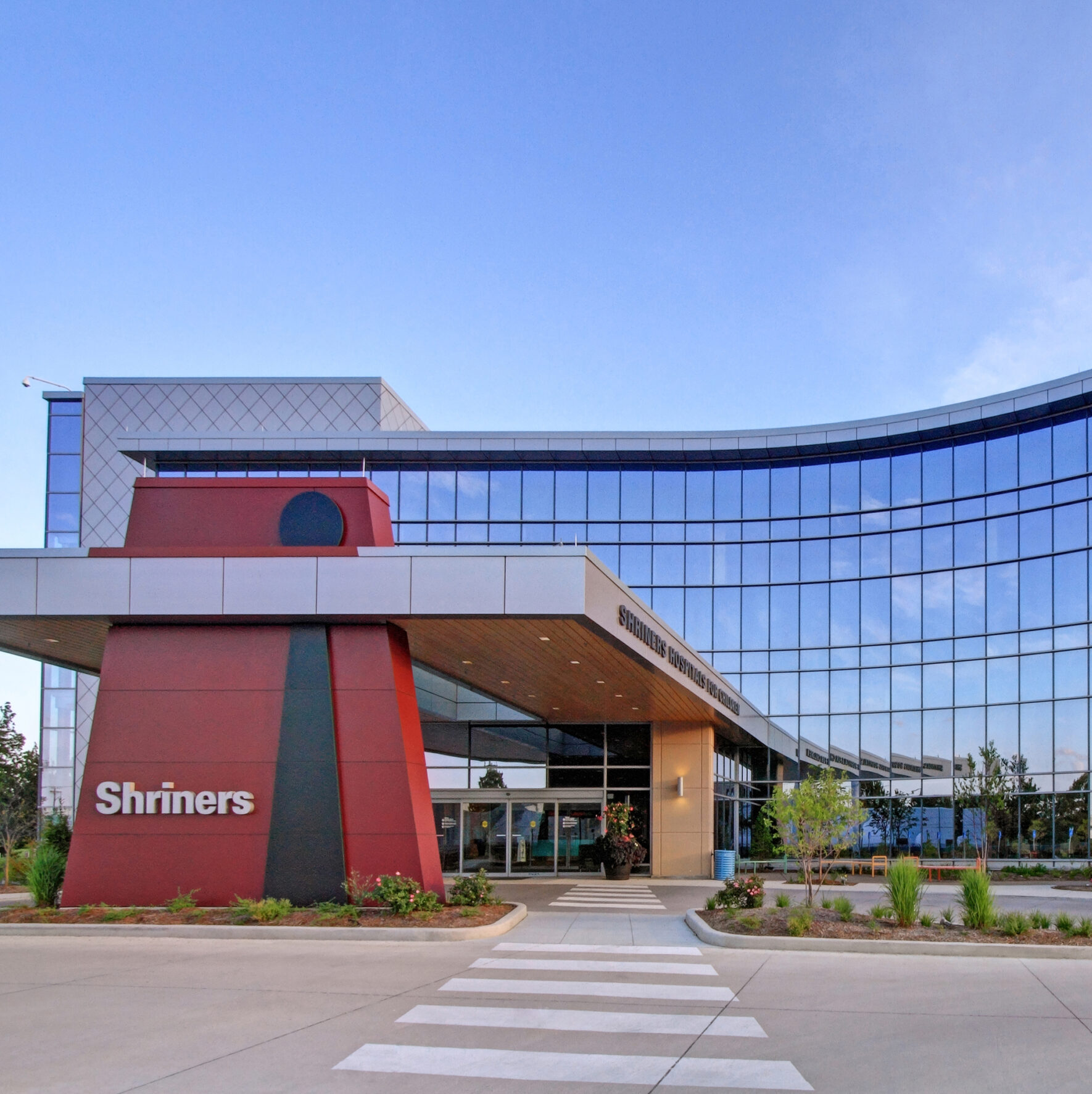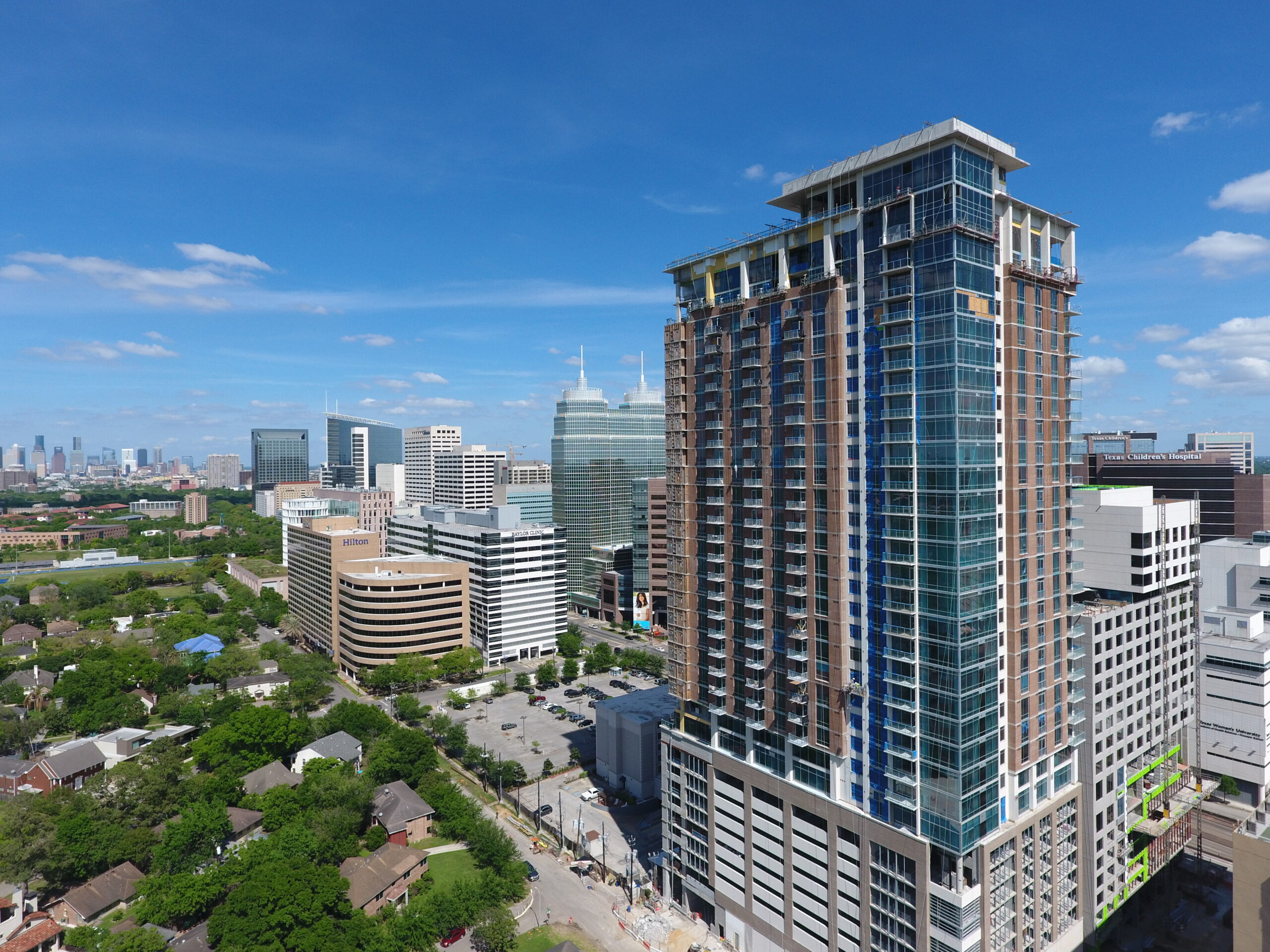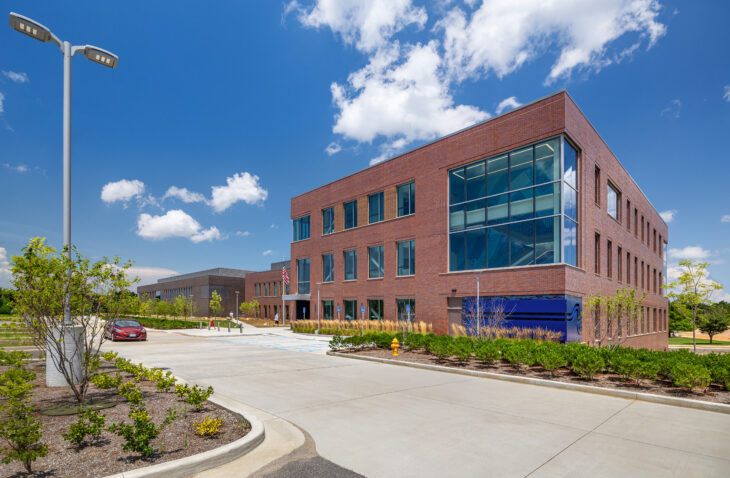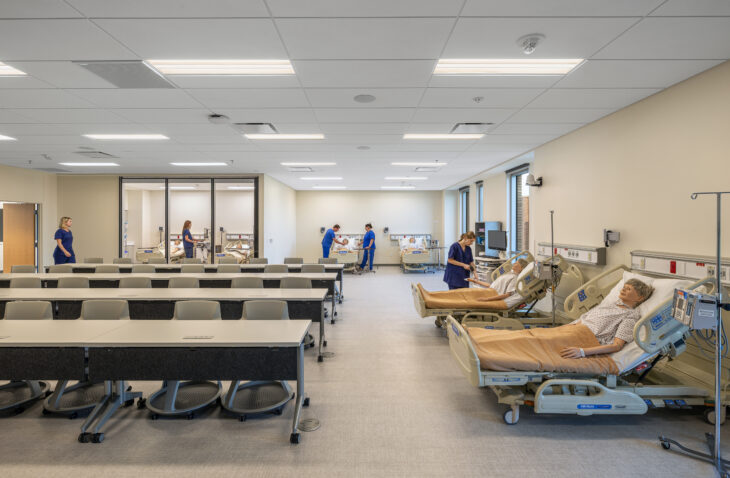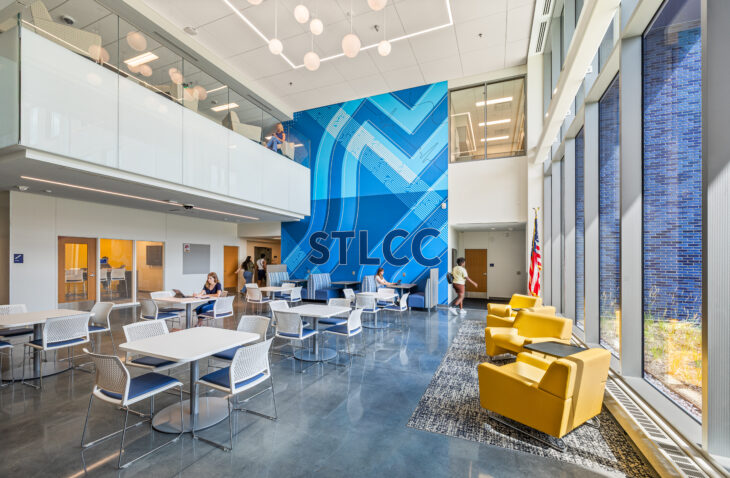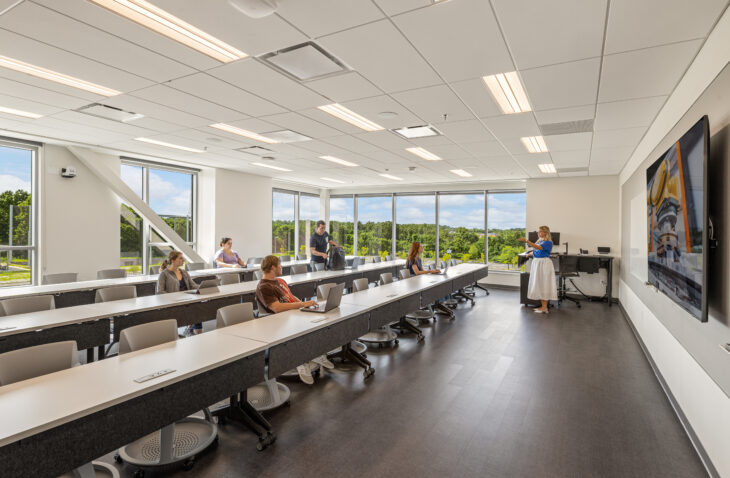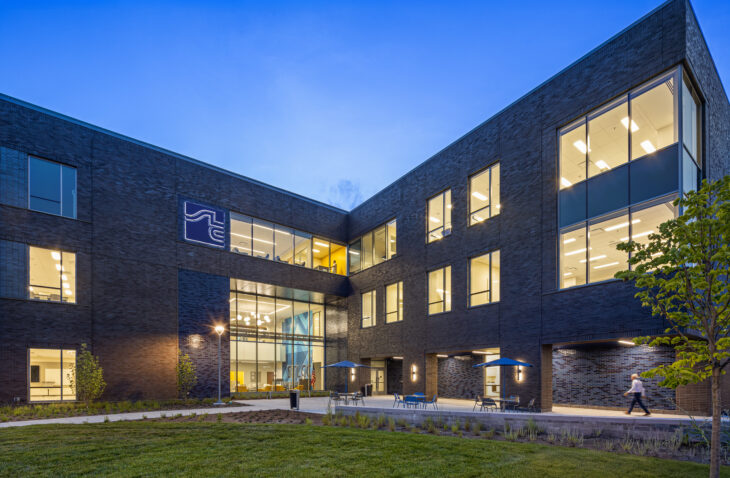New Health Sciences and Technologies Studies Building
The project: The St. Louis Community College at Wildwood Health Sciences and Technology Studies building is a $58.75 million project. It was part of the college’s district-wide master plan, which identified a growing student population around the Wildwood campus and increased enrollment in Health and Technology programs.
The goal: The master plan estimated space for two new 75,000-sf buildings to accommodate those programs, offer easy access to an existing building, and create a more complete campus feel, but the Owner wanted to consider cost-efficient solutions.
Design approach: In the conceptual design phase, IMEG and the architect worked with the Owner to develop two conceptual designs —separate buildings, and a combined building that felt like separate buildings but functioned as one for systems efficiency. Due to budget constraints, the combined building was chosen.
Challenge: Create a cost-effective MEP system that would serve sections of the building with very different uses. Solution: The mechanical design of the building includes high efficiency condensing water boilers and water-cooled screw chillers. These systems will work with air handling units (AHUs) to provide heating and cooling. The AHUs included energy recovery ventilators (ERV) and use variable air volume (VAV) boxes with reheat coils for space reheat as needed.
The electrical design features a 480V distribution system with step-down transformations for branch loads. An emergency generator provides emergency and optional standby loads. The new electrical infrastructure will also accommodate a 140kW photovoltaic array. Other features will include LED lighting with low voltage lighting controls, 12 electric vehicle (EV) charging stations, and a fire alarm system with voice communication systems.
Rapid performance modeling was completed in the conceptual phase of design where five HVAC systems were evaluated to determine the most efficient option before moving to design. This early analysis set energy benchmarks for the buildings programming to understand where the major energy users may be and to focus sustainability efforts there. Renewable energy analysis studied the available roof area for photovoltaic arrays implementation and offset of the building’s energy consumption. A geothermal bore field analysis was also performed during the conceptual design.
Challenge: The college wanted an energy efficient building. Solution: Energy modeling was completed at every stage of the project in alignment with the LEED certification efforts. Through the dedication of the team implementing sustainability strategies, the project was able to achieve reductions of roughly 30% across the board in energy cost, energy consumption, and operational carbon emissions from baseline.
The outcome: The building provides separate spaces for two unique programs, while combining systems to create a more efficient and cost-efficient structure. The 75,000-sf Health Sciences area will provide programmatic and support space for Nursing, Advanced Imaging, Deaf Communication, Physical Therapy/Massage Therapy, Paramedic and EMT, Medical Lab Technician. The 75,000-sf Technology Studies Program will provide programmatic and support space for STEM programs, Student Services, and an Enrollment Center. The building opened in June 2025.
